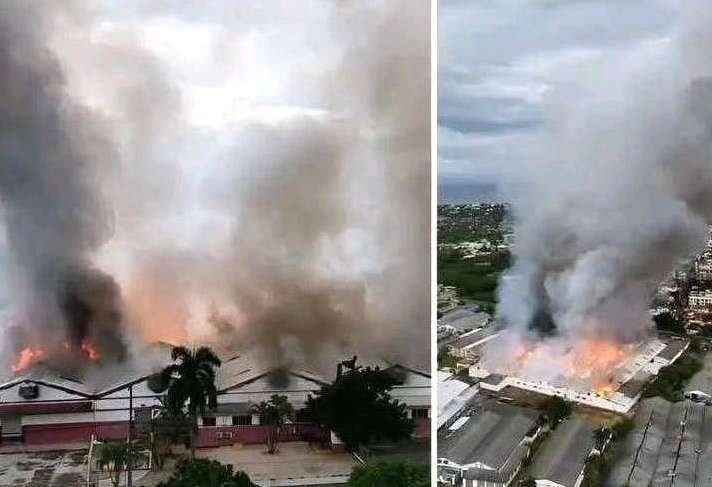A devastating 7.7-magnitude earthquake struck Asia in the early hours of Monday, June 17, 2025, sending shockwaves of destruction across southern China, northern Thailand, and Myanmar. The tremor, which the United States Geological Survey (USGS) reported at a shallow depth of just 10 kilometers, had its epicenter in the rugged mountainous region along the Yunnan Province–Myanmar border. Because of its shallow depth, the quake’s impact was amplified, causing widespread structural damage, mass panic, and a rising toll of casualties.
At precisely 3:42 a.m. local time, as most residents were still asleep, the ground roared and swayed violently. In the affected areas, buildings shuddered and crumbled, trapping residents under debris. Preliminary reports indicated dozens of deaths and hundreds of injuries, though officials fear the real numbers could rise significantly once full access is restored to cut-off villages and towns. Many survivors have described harrowing scenes of neighbors pulling one another from collapsed homes with bare hands, while others scrambled through rubble to retrieve loved ones.
In the immediate aftermath, entire neighborhoods were thrown into chaos. Northern Thai cities like Chiang Mai and Chiang Rai, both popular with tourists, experienced the quake at nearly full force. Hotels, temples, and residential complexes were evacuated as frightened crowds gathered in open spaces, terrified of further aftershocks. Authorities ordered mass evacuations in several districts, warning that damaged structures could collapse at any moment. Families rushed into the streets clutching children, pets, and whatever belongings they could carry, while officials tried to establish order in the midst of confusion.
In Myanmar, the quake wreaked havoc on rural communities where infrastructure is already fragile. Wooden homes splintered, concrete buildings cracked open, and landslides in the mountainous border region buried sections of roads. Entire villages were left isolated, with residents signaling to helicopters using fires or makeshift banners. Relief teams are struggling to reach these areas, as blocked roads and ongoing tremors continue to hamper operations. Local hospitals, some partially damaged themselves, are overwhelmed with the injured, forcing doctors and nurses to triage cases in hallways, courtyards, and even parking lots.
China’s Yunnan Province, known for its diverse ethnic communities and remote landscapes, has seen widespread damage as well. Footage shared on social media revealed apartment blocks swaying, ceilings collapsing in shops, and terrified residents fleeing into the night. In Kunming, the provincial capital, tremors were strong enough to knock items off shelves and crack walls, though the city escaped the catastrophic destruction seen closer to the epicenter.
Rescue operations were launched immediately, with fire brigades, soldiers, and volunteers joining efforts to clear rubble and search for survivors. But response teams face immense challenges: communication lines are down in several areas, making coordination difficult, while electricity blackouts leave towns in darkness. Emergency shelters have been set up in stadiums and schools for thousands of displaced people, though food, water, and medical supplies remain scarce. Local volunteers have stepped in, distributing bottled water, blankets, and hot meals to those forced out of their homes.
Hospitals in all three countries are under strain, treating fractures, head injuries, and cases of severe shock. Mobile clinics are being set up near evacuation zones, but with aftershocks rattling nerves, many people are afraid to return indoors, even for treatment. Aid agencies have already warned of the risk of secondary crises such as water contamination and the spread of disease if displaced populations remain in temporary camps for an extended period.
Governments of China, Thailand, and Myanmar have pledged immediate and coordinated relief. Leaders from all three countries issued statements expressing solidarity and commitment to supporting survivors. China has dispatched military helicopters and heavy equipment to clear debris in Yunnan. Thailand mobilized disaster relief teams to assist evacuees and inspect damaged buildings in Chiang Mai and surrounding areas. Myanmar’s government, while struggling with limited resources, has appealed for international assistance, urging NGOs and neighboring countries to step in with humanitarian support.
Aftershocks continue to rattle the region, intensifying fears among residents. Seismologists have warned that aftershocks of significant magnitude are likely in the coming days, meaning that already weakened buildings could collapse without warning. Authorities have urged people to stay outdoors when possible and avoid reentering damaged homes until engineers can assess safety.
The human stories emerging from this disaster underline its severity. In Chiang Rai, a family of five was rescued after neighbors dug through concrete slabs with shovels and pickaxes. In Myanmar, a teacher guided her entire class of students to safety just seconds before the school’s roof caved in. In Yunnan, villagers formed human chains to pass children and elderly residents out of collapsed homes. While tragedy dominates the headlines, moments of bravery and solidarity are also surfacing, reminding the world of the resilience of those affected.
The earthquake has once again highlighted the vulnerability of this region to natural disasters. The mountainous terrain of Yunnan and northern Myanmar sits on complex fault lines, making it prone to seismic activity. Thailand, while less frequently hit by large earthquakes, is not immune, especially in its northern areas. Experts stress that while earthquakes cannot be predicted, stronger building codes, better early warning systems, and cross-border disaster coordination could help reduce future casualties.
International organizations are closely monitoring the situation. The United Nations has pledged to send emergency aid, and neighboring countries including India and Laos have expressed readiness to assist. Relief groups on the ground emphasize that time is critical: the first 72 hours after a major earthquake are the most crucial for rescuing survivors trapped under debris. Every hour that passes makes it less likely to find people alive.
For now, the focus remains on saving lives and stabilizing the displaced. Yet once the immediate crisis passes, the long road to recovery will begin. Rebuilding homes, restoring power, and repairing roads will take months, if not years. The emotional toll will be just as severe, as families mourn lost loved ones and communities grapple with trauma.
This 7.7-magnitude earthquake stands as one of the most powerful the region has faced in years. It serves as a stark reminder of the need for preparedness in areas sitting on volatile fault lines. For the people of southern China, northern Thailand, and Myanmar, life will not return to normal anytime soon. But as survivors come together, supported by local heroes and international aid, they will begin the painful yet determined process of rebuilding not just their homes, but their futures.


